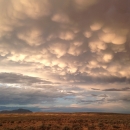Assessing the impact of invasive annual grasses and wildfire on native pollinators within the sagebrush sagebrush
The western United States’ sagebrush country encompasses over 175 million acres of public and private lands. The sagebrush landscape provides many benefits to our rural economies and communities, and it serves as crucial habitat for a diversity of wildlife, including the iconic greater sage-grouse and over 350 other species.
Learn more about sagebrush -steppe biome
Funding Year | Amount | Location |
FY24 | $312,817 | Rangewide |
Project Description
This project will provide critically needed baseline information on native bee communities of the sagebrush biome. Insect pollinators-particularly native bees-are critically important in the maintenance of terrestrial plant and animal communities, yet our understanding of how contemporary threats influence this group and the pollination services they provide is virtually unstudied with the sagebrush biome. Our investigation will quantify how bee communities respond to widespread threats to sagebrush-wildfire and invasive annual grasses-and provide foundational knowledge needed for undertaking informed management decisions to improve the resilience of the biome.
Partners
Oregon State University


